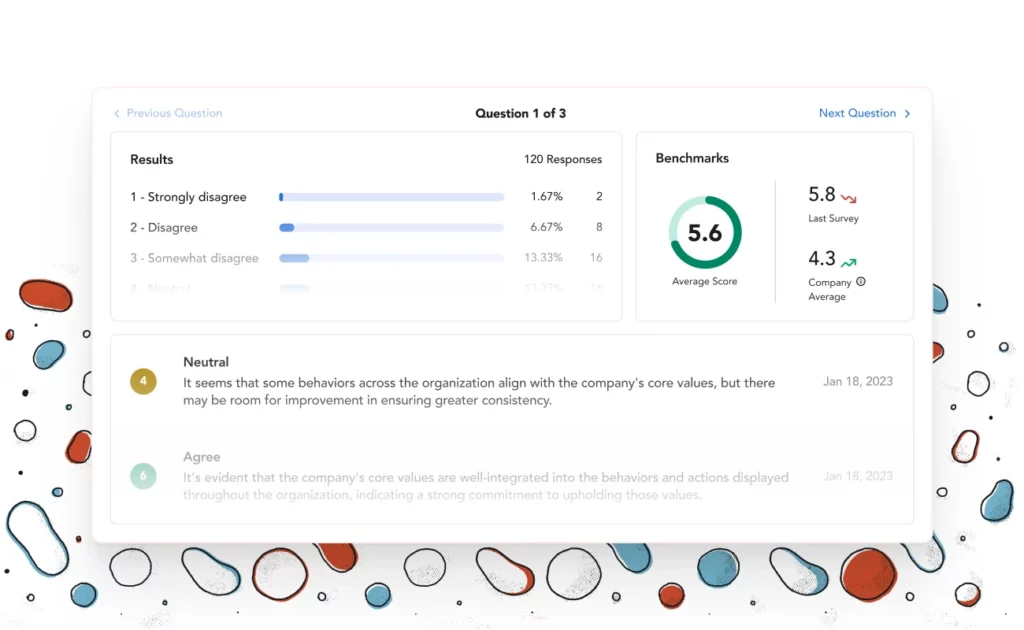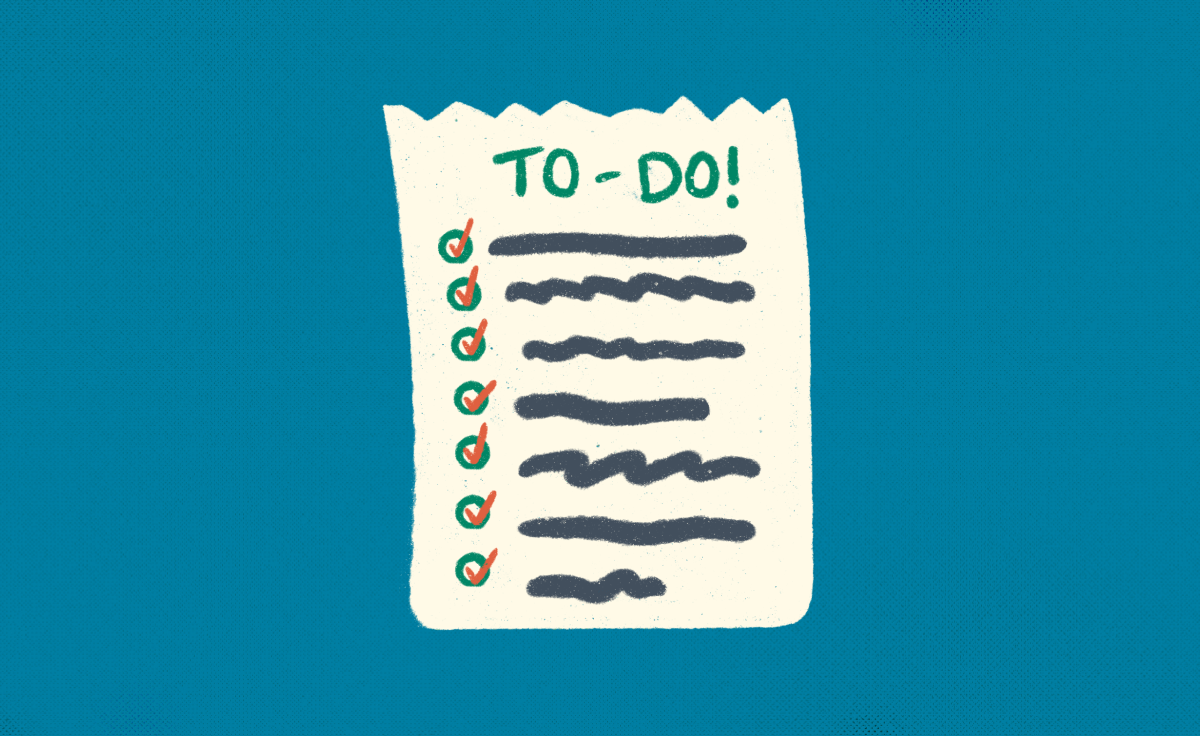Leave it to Ethena’s VP of People Melanie Naranjo — yes, the same LinkedIn superstar you’ve seen shelling out HR gems on the reg — to perfectly sum up what being part of HR actually entails.
“HR is such a broad and all-encompassing field: it’s employee wellness, employee engagement, employee happiness. It’s performance reviews and performance management. It’s DEI, it’s compliance.”
Melanie Naranjo, VP of People
But with more companies reducing headcount and budget lately, HR teams have had to become more scrappier than ever. Many are being tasked with doing more with less, which is a particularly huge ask for those of you who are gallantly running a department of one.
3 HR strategies for when you have limited time (and resources)
From implementing useful techniques to adopting the right tools to save your time and sanity, we’re here to serve up three solid HR strategies designed to keep burnout at bay and motivation momentum strong. We’ll discuss how automating repetitive tasks, distributing the workload, and using templated resources can help you achieve just that.
So let’s dive in.
1. Save time with automation.
HR can improve employees’ lives on so many levels. Which is incredible, but the reality is that many HR-related tasks can also be repetitive, tedious, and mundane. Think new employee onboarding, manager training sessions, annual performance reviews, employee surveys — all super important, essential, useful… and also needed on repeat.
This is exactly why HR automation is the perfect strategy to get these tasks done and dusted efficiently. In a nutshell, here’s how automation works:
- It helps you make decisions upfront
- It lets you easily commit to those decisions
- It allows you to automate similar decisions moving forward

Example scenario: let’s say you’re looking to launch an employee survey.
Here’s what you’ll want to decide up-front:
- Why are we doing this and what problem are we trying to solve? Thinking it through from the outset will inform the next steps and set the tone for running future surveys by establishing a solid starting point.
- What’s a must-have versus a nice-to-have? We say “less is more” for a reason: if you can glean the same info in 20 survey questions versus 50, stick to 20 (or even fewer!) that address high-risk areas like employee engagement (as opposed to, say, opinions on office snacks).
Then, you’ll need to commit to the process:
- How much bandwidth do you have? Chopping a survey down to the essentials has additional benefits: if you’re a single individual running an HR team, it’ll be you weeding through all that data.
- What readily-available resources can you tap into? Are there free platforms you can leverage, or an opportunity to lobby for more budget to support your needs? Both have the potential to support automation, so they’re worth considering!
And lastly, automate next steps:
- Set up an email template to copy-paste text when sending out future surveys.
- Keep the timing cycle streamlined, like making sure the deadline is always two weeks after a survey is sent out, and surveys are always completed three months after performance reviews.
- Create an FAQ doc to link out to instead of answering the same employee questions over and over.
2. Distribute the workload.
This is a biggie: employee success — and this includes all employees — doesn’t fall solely on the shoulders of HR. Even if you’re a solid team of one, success isn’t achievable without the input and contributions of folks across the company; including leadership and managers. In order for People initiatives to work, it’s essential to distribute the workload. Let’s explore two tactical approaches.
First, empower your managers to manage effectively. Supply tools to your managers like:
- Coaching (for instance, through a resource like BetterUp)
- Performance management techniques (using weekly pulse check questions to monitor performance)
- Knowledge on salary bandwidths (set up a document outlining salary ranges and what it takes to reach each level),
- Training and survey completion data (ensure your vendor makes this information sharable)
Without supplying these tools in advance, your HR team of one can be reactive. And being constantly in the position of the damage-control police, often when it’s too late, sucks up value time and energy. Use HR consolidation to your advantage by offering resources proactively.
Then, empower your employees. Everyone contributes to workplace culture, so have employees take an active and engaged role in establishing it. HR burnout happens when HR tries to tackle it all. No! Let your employees help.
Depending on your budget, offer a monthly stipend where each employee can expense $100 (this is what we do at Ethena!) to meet their coworkers for a fun activity of their choice — from kayaking to manicures to catching a matinee.
If you want to spotlight DEI initiatives, encourage employees to talk about an awareness month or share their perspective in Slack or other communication channels. Turn to existing resources like free webinars on topics of interest, have folks watch them, and then have breakout sessions to discuss. Open up a dialogue around forming ERGs and support employees with resources to create them.
3. Don’t start from scratch.
In HR especially, there’s no need to reinvent the wheel: leverage existing resources! This isn’t about taking the easy way out, it’s about efficiency. Lean on available tools and resources, and don’t start from scratch.
Here are some of our favorite policy templates:
- Parental Leave Policy
- Dating Policy Template
- Anti-Harassment & Retaliation Policy Template
- Performance Review Template
- Sample Reasonable Accommodations Package
Basically, what we’re saying is don’t make everything from scratch! There’s no shame in using a recipe. Grab resources and templates wherever available to save you time.
The final word
Ethena keeps HR tasks efficient and cost-saving, here’s a quick summary:
- Consolidation of resources to save money: There’s no need to subscribe to multiple training vendors when a single one like Ethena gets the job done! Our one-stop-shop provides management dashboards, tracks completion, sends timely training reminders, and offers features that can host homegrown trainings, and more.
- Championing HR effectiveness: Ethena supports integrations with platforms you already use (like Slack, Bamboo HR, and Gusto, to name just a few).
- Alignment with your company’s efficiency goals: Think of it this way — optimizing for what your CEO wants goes a long way toward saving money and benefiting the business (for instance, choosing a strong vendor like Ethena means not having to hire someone to oversee multiple HR processes), while offering an improved employee experience through a single platform.
From our automated course reminders to our LMS Essentials tool, we save you time in more ways than one. But don’t just take our word for it. See why HR and Compliance leaders like you love us on G2.










